budget
projectbudget
discoveryworkshop
How to create a project budget?
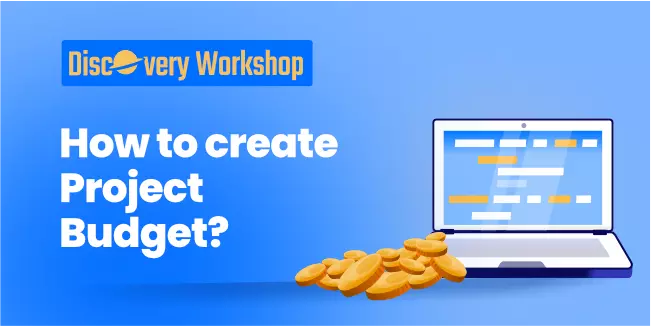
We present to you another article from the Discovery Workshop series. This time, the subject is money. Once you know how to build a Project Roadmap and Project Timeline, you may need a glance at your budget. That's why we come to you with an article about that. Here are our best ways to keep your finances on hand when creating a product.
It is worth remembering that estimating a project budget yourself is not a simple task, especially if you've never done it before. Therefore we offer you Free Estimation, thanks to which you will know exactly how much money you should have in order to create a successful app!
What is a project budget?
A project budget is the total cost of all activities, procedures, and materials involved with a whole project. It's one figure on which everyone involved in the project agrees to abide. However, a project budget defines how much that magic number will be utilized and a document that specifies how it will be spent. Managers and stakeholders can track and control project expenditures by determining how the project team will distribute spending across activities and tasks. Before your project begins, your project budget should be set. Unless the requirements of your project change, you won't be able to increase your budget very often.
After the Discovery Workshop, you will receive a budget and documentation. Because of your involvement in the project, you know exactly what it comprises and where each step occurs. All of this has been discussed with you and our technological and business expertise so that we know precisely what you want to construct and how much it will cost.
If you want to know how to create a project budget, then you'll probably be interested in software development costs in general. Get to know our "Software development costs - everything you need to know" article in which we present what factors influence the costs, and how to lower them.
What are the components of a project budget?
All of the project's expenses are compiled in a budget. It frequently includes the following:
- Employee compensation, benefits, payroll taxes, and overhead costs make up total labor costs.
- The fees incurred in acquiring materials are referred to as procurement costs. They include items, services, equipment, and supplies obtained from third parties.
Project costs for each category may often be divided into two major classes - labor and materials.
- Fixed costs: These are agreed upon in advance and will not alter. If you need to supply a certain amount of a specific thing and have an actual quotation from a vendor, this is an example of a fixed cost.
- Variable costs are incurred regardless of activity. Suppose you have a subcontractor working by the hour on your project and exceeds its deadline, the cost increases. Variable expenses require the most attention.
The costs for each project activity are determined and given a deadline. This level of specificity is essential in monitoring project progress. You'll know what your weekly spending is if you have 80 hours set aside for design over two months so you can detect abnormalities immediately.
What is the purpose of a project budget?
The obvious response is that projects necessitate a price tag, but this is not the whole story. The funding engine drives your project's cash flow. It informs stakeholders about how much money is required and when it is due.
But there's more to it than simply obtaining the things your project requires. Yes, you must pay employees and acquire or rent equipment and materials, but that is only half of the equation.
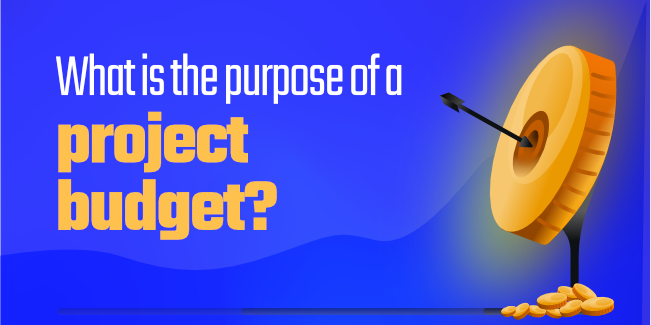
Another part of the value of a project budget is that it serves as a tool for controlling expenses. The budget serves as a baseline against which you can measure your performance as you gather real expenditures once the project has begun.
Budgeting is an essential communication tool in project management. It assists in the visibility of the project team and key stakeholders.
As your project progresses, you'll use your project budget to compare actual costs to expected ones and report that information to stakeholders. Your budget may also change if project requirements change, reflecting the new expenses.
- Budgets used by project teams track budget consumption as the project progresses, reflecting progress and success.
- Budgets provide transparency into how funds will be spent by showing the amount of money allotted and the overall budget and enabling stakeholders to make informed decisions. Budgets safeguard funding by offering clarity on how financial resources will be used.
- Project budgets help businesses function efficiently by planning expenditures ahead of time.
- Budgeted project expenses reveal future project expenditures by allowing you to compare actual costs over time.
It's in your best interests to take your time and develop an accurate budget as part of your project plan for successful budget management. According to 24% of project managers, unrealistic budgets harm projects by causing high expenditures or other difficulties.
The benefits of effective project budgeting
A budget is essential for any project, but the advantages extend beyond simply knowing how much it will cost. The following are some of the advantages of effective project budgeting:
- You may quickly identify areas that need attention by determining how much money is available for each project activity.
- Managing a project is difficult, but having the appropriate human resources on hand is one of the most challenging aspects of the job. The project budget allows you to know precisely what abilities you'll require for how long, which is especially valuable when individuals are working on several projects at once.
- The budget is a valuable management tool for determining whether you're on track to achieve objectives.
- It enables you to rank tasks according to how quickly they can be accomplished within the constraints of your resources. It might lower your expectations, but at least you'll be meeting expectations.
- It encourages future thinking and planning.
- Project managers who can provide excellent outcomes while managing expenditures have a bright future ahead of them.
How to estimate the budget for a project
Budgeting is a challenging project management skill to acquire. We've prepared a step-by-step project budgeting process as a checklist to ensure that you cover all of the bases to assist you in learning this vital skill. That's something we do in our previous projects, so we'll make sure everyone is pleased.
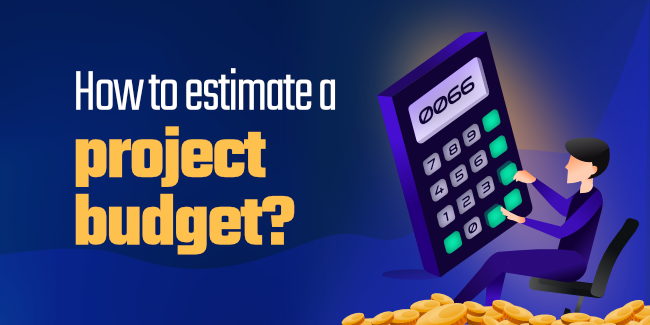
Creating a project budget is related to the project timeline; you can estimate the actual cost when you have a description with deadlines for the entire project. It is how you can do that:
Refer to your project scope
The project scope contains the objectives, deliverables, activities, and deadlines for the project. You'll need all of this information to determine your budget.
Break down your project into tasks and milestones.
If that's the case, go right ahead and start using it. However, if you don't have one yet, create a scope and write down everything your team needs to accomplish. Using your task list will help you figure out what you'll need to finish and assist with project cost management.
Estimate each item in the task list
Now it's time to give each item you've jotted down a positive appraisal. At this point, including all of the resources and materials, you'll need to do well in your price estimate.
Add your estimates together
The first step in project budgeting is to establish the estimated cost of each activity. It is probably one of the simplest parts of the process, especially when a spreadsheet has two columns: Tasks and Costs. Then you can get it done fast.
Define the resources you need
You'll need to keep track of all the individuals and objects you'll need to complete the job on time. You'll have to think about personnel, equipment, training, travel, materials, leases, subscriptions... the list goes on.
Understand the resource rate
Project managers may expect that the entire team will work together to accomplish a project's objectives. Still, they will have different rates and capabilities. The more experienced individuals cost more, although they are frequently capable of completing tasks faster and with greater quality. Labour and material costs are also factored into your budget estimate.
Add contingency and taxes
It's better to be safe than sorry. Of course, you can't be certain of the final cost estimate since things change. You may avoid going over budget by adding contingency and taxes, ensuring that the project doesn't exceed its budget and your prediction numbers are closer to the real costs you ultimately spend. If you're not sure how much contingency to include, experts suggest using a 20% margin for safety.
Assign budget estimates
Now that you've compiled a list of resources assign a number to each. It will need a lot of study and collaboration. Each project is unique, but here are some estimating methods to get you started:
Review historical data and actual costs from comparable efforts if available. Pay close attention to any lessons learned in prior projects to avoid making the same mistakes. It is sometimes called "analogous estimating" since you use an analogy or a project similar to the one you and your team are working on as a basis for your estimate.
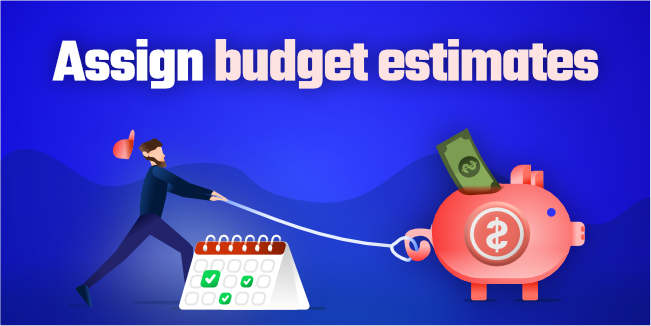
Calculate the cost of each unit: sometimes, you can find the complete overall price estimate by looking at component pricing or duration and then scaling the result based on how many units are required. It is sometimes known as "parametric estimating" because you're using established parameters to arrive at your guess. For example, if one hour was needed to construct one part, building 8 will take eight hours.
Make contact with suppliers: obtain fixed expenses for project components that you may and estimates for elements yet to be determined. Suppliers are ideal candidates to give cost estimates for the items and services they will deliver.
Establish a contingency fund
Costs can change drastically throughout a project, and it's nearly impossible to pre-determine what everything will cost at the start. A reasonable estimate is 20% of the total project budget; however, this may vary depending on the situation. Having an emergency fund allows you to maintain some cash reserves if prices rise.
Build the budget
Make a list of the estimates and their costs. Make sure your budget has limits, assumptions, and a timeline. After you've completed this task, save the budget so that it can be used later to create your project management software or project budget template.
Obtain approval
When presenting your budget to management or stakeholders, you want it to be accurate. Suppose you have particular individuals assigned to each of the elements in your plan. In that case, they may check it for errors and omissions before formal approval. You'll also need to explain why you came up with these figures.
Participating in our Discovery Workshop will receive documentation, including a timeline and an ownership budget. We always recommend that you share this document with other vendors so that they may estimate the cost of converting your digital product.
Project budget management
The process of monitoring and tracking spending throughout a project is known as project budget management. It's one of the most critical capabilities for a project manager.
You can quickly detect if costs exceed predictions and adjust before the budget is blown by monitoring it regularly throughout the project's life. In addition, you will have insight into future spending needs in time to get the money, allowing the project to continue without interruption.
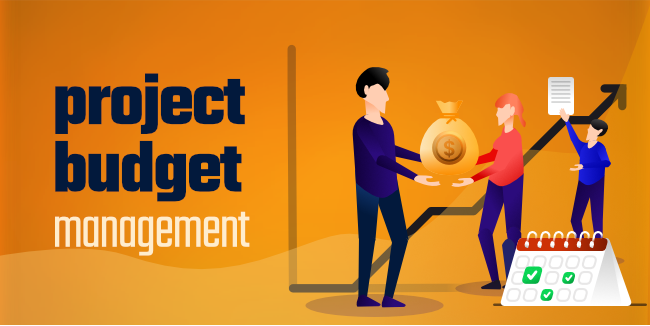
When you create a new project, set the initial project budget as a starting point and use it to assess variances. You'll need permission for your modifications, then reset your project budget when the project evolves.
Avoid surprisingly going over budget as a project manager. You may anticipate if a project will go over budget by carefully tracking your budget, and you can take action to prevent it from happening. While the contingency assists you in managing variance, it can only stretch so far.
Conclusion
A project budget is a crucial component of successful project management. By understanding the basics of creating and managing a budget, you can ensure that your projects are completed on time and within budget.
When creating a budget, include all project costs, both direct and indirect. Indirect costs can include things like overhead or general and administrative expenses. Be sure to also account for any delays in reporting or changes in accounting practices.
After the Discovery Workshop, your team should understand the project's objectives, timeline, and budget. The next step is to create a work plan that outlines how you will achieve those objectives within the given timeline and budget.
Finally, remember to update your budget regularly and record the lessons you learn so you can apply them to future projects.

This article is part of our Discovery Workshop series
What is Product Design? What is the Product Discovery and Product Discovery Process? Tips and Techniques for Effective Product Discovery Process Idea Validation in Practice Product Roadmap - how to write user stories and user flows? How to choose a tech stack for your project? How to create a project timeline? Now readingHow to create a project budget? Functional Requirements Document for your Product What is a Prototype? Build your MVP (Minimum Viable Product) the right way - step by step guide by mDevelopers